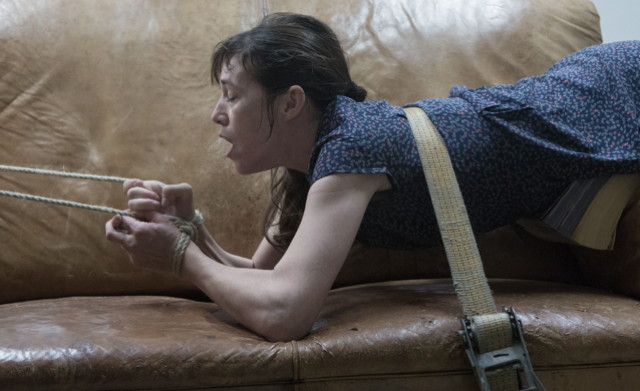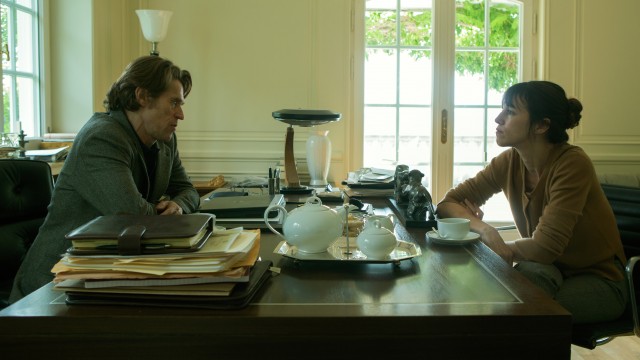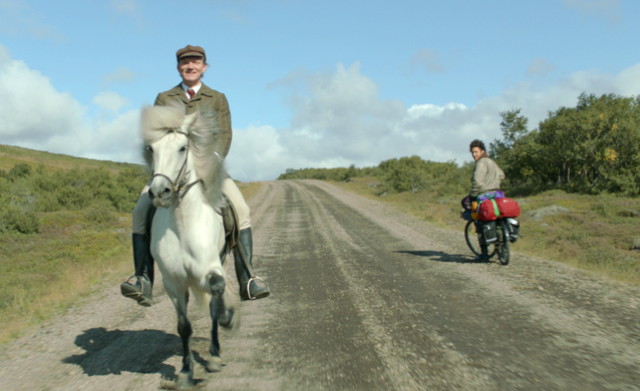Film Society of Lincoln Center
Walter Reade Theater
144 West 65th St. between Broadway & Amsterdam Aves.
June 27 – July 10
212-875-5600
www.filmlinc.com
www.subwaycinema.com
Year after year, the New York Asian Film Festival screens the wildest, craziest, most wide-ranging collection of cinematic adventures from China, Japan, Taiwan, Korea, and Hong Kong, delighting fans with premieres from favorite directors, welcome dips into the past, celebrations of cult classics, and intriguing works from up-and-coming artists. The thirteenth annual NYAFF is no exception, consisting of forty-four films from across the spectrum, along with special tributes to Sandra Ng (Queen of Comedy Star Asia Award), Sol Kyung-gu (Star Asia Award), Park Joong-hoon (Celebrity Award), Fumi Nikaido (Screen International Rising Star Award), Lee Jung-jae (Korean Actor in Focus), and Jimmy Wong Yu (Lifetime Achievement Award). Also making appearances will be Alan Mak & Felix Chong, Moon So-ri, Anna Broinowski, Zishuo Ding, Fei Xing, Lee Sujin, Shin Yeon-shick, and Umin Boya. Looking for a sexy comedy? In 3D? Try Lee Kung-lok’s Naked Ambition. Want a peek into the filmmaking side of Dear Leader Kim Jong-il? There’s Anna Broinowski’s Aim High in Creation! In the mood for some Shaw Brothers? Then check out Roy Ward Baker and Change Cheh’s The Legend of the 7 Golden Vampires. You can’t leave out Zombies, so Sabu has that covered with Miss Zombie.
Hungry for a neo-spaghetti Eastern? Ning Hao is serving up No Man’s Land. How about the very first openhanded martial arts film? Jimmy Wang Yu’s 1970 The Chinese Boxer puts you in the middle of the action. You’ll also find new films by such familiar names as Kim Ki-duk, Hideo Nakata, and Kiyoshi Kurosawa and featuring such stars as Andy Lau, Chow Yun-fat, Simon Yam, Hitoshi Matsumoto, and Tadanobu Asano. The opening-night selection is Mak and Chong’s Overheard 3, the international premiere of the conclusion of the gangster trilogy. The centerpiece choice is Boya’s three-hour Kano, about a pioneer Taiwanese baseball team. In conjunction with the NYAFF, the always awesome Japan Cuts follows immediately, running July 10-24 at Japan Society, comprising more than two dozen contemporary films from Japan, only a few of which were also part of the NYAFF.
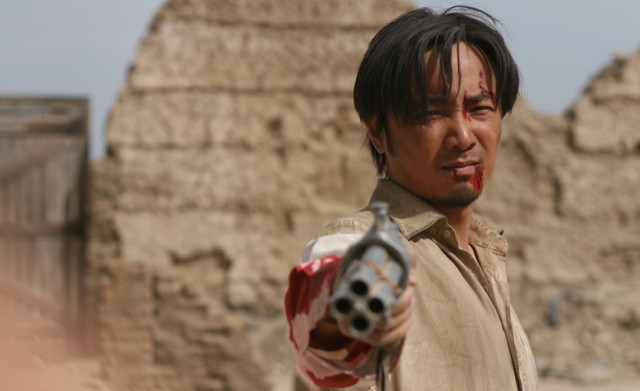
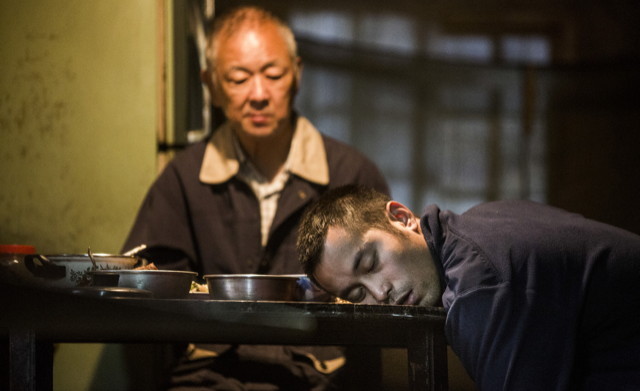
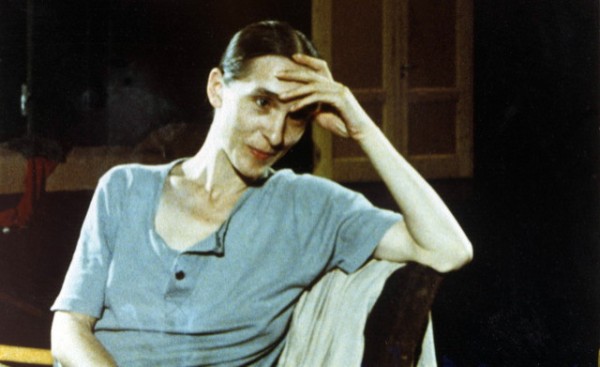
 In 1982, Belgian filmmaker Chantal Akerman followed Pina Bausch’s Tanztheater Wuppertal on a five-week tour of Europe as the cutting-edge troupe traveled to Milan, Venice, and Avignon. “I was deeply touched by her lengthy performances that mingle in your head,” Akerman says at the beginning of the resulting documentary, “One Day Pina Asked…,” continuing, “I have the feeling that the images we brought back do not convey this very much and often betray it.” Akerman (Jeanne Dielman, 23 Quai du Commerce, 1080 Bruxelles; Je tu il elle) needn’t have worried; her fifty-seven-minute film, made for the Repères sur la Modern Dance French television series, is filled with memorable moments that more than do justice to Bausch’s unique form of dance theater. From 1973 up to her death in 2009 at the age of sixty-eight, Bausch created compelling works that examined the male-female dynamic and the concepts of love and connection with revolutionary stagings that included spoken word, unusual costuming, an unpredictable movement vocabulary, and performers of all shapes, sizes, and ages. Akerman captures the troupe, consisting of twenty-six dancers from thirteen countries, in run-throughs, rehearsals, and live presentations of Komm Tanz Mit Mir (Come Dance with Me), Nelken (Carnations), 1980, Kontakthof, and Walzer, often focusing in on individual dancers in extreme close-ups that reveal their relationship with their performance. Although Bausch, forty at the time, is seen only at the beginning and end of the documentary, her creative process is always at center stage. At one point, dancer Lutz Förster tells a story of performing Gershwin’s “The Man I Love” in sign language in response to Bausch’s asking the troupe to name something they’re proud of. Förster, who took over as artistic director in April 2013, first performs the song for Akerman, then later is shown performing it in Nelken. (Bausch fans will also recognize such longtime company members as Héléna Pikon, Nazareth Panadero, and Dominique Mercy.)
In 1982, Belgian filmmaker Chantal Akerman followed Pina Bausch’s Tanztheater Wuppertal on a five-week tour of Europe as the cutting-edge troupe traveled to Milan, Venice, and Avignon. “I was deeply touched by her lengthy performances that mingle in your head,” Akerman says at the beginning of the resulting documentary, “One Day Pina Asked…,” continuing, “I have the feeling that the images we brought back do not convey this very much and often betray it.” Akerman (Jeanne Dielman, 23 Quai du Commerce, 1080 Bruxelles; Je tu il elle) needn’t have worried; her fifty-seven-minute film, made for the Repères sur la Modern Dance French television series, is filled with memorable moments that more than do justice to Bausch’s unique form of dance theater. From 1973 up to her death in 2009 at the age of sixty-eight, Bausch created compelling works that examined the male-female dynamic and the concepts of love and connection with revolutionary stagings that included spoken word, unusual costuming, an unpredictable movement vocabulary, and performers of all shapes, sizes, and ages. Akerman captures the troupe, consisting of twenty-six dancers from thirteen countries, in run-throughs, rehearsals, and live presentations of Komm Tanz Mit Mir (Come Dance with Me), Nelken (Carnations), 1980, Kontakthof, and Walzer, often focusing in on individual dancers in extreme close-ups that reveal their relationship with their performance. Although Bausch, forty at the time, is seen only at the beginning and end of the documentary, her creative process is always at center stage. At one point, dancer Lutz Förster tells a story of performing Gershwin’s “The Man I Love” in sign language in response to Bausch’s asking the troupe to name something they’re proud of. Förster, who took over as artistic director in April 2013, first performs the song for Akerman, then later is shown performing it in Nelken. (Bausch fans will also recognize such longtime company members as Héléna Pikon, Nazareth Panadero, and Dominique Mercy.)
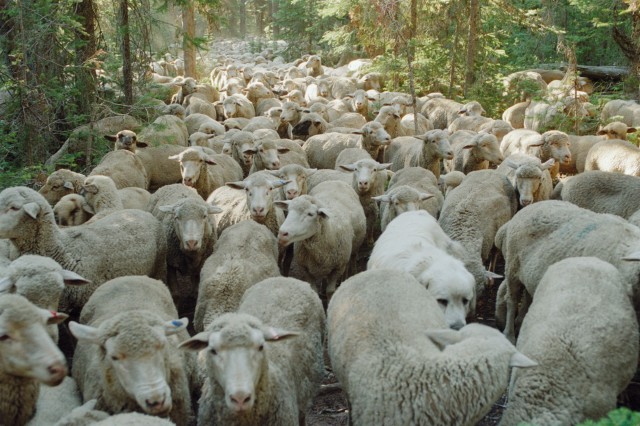
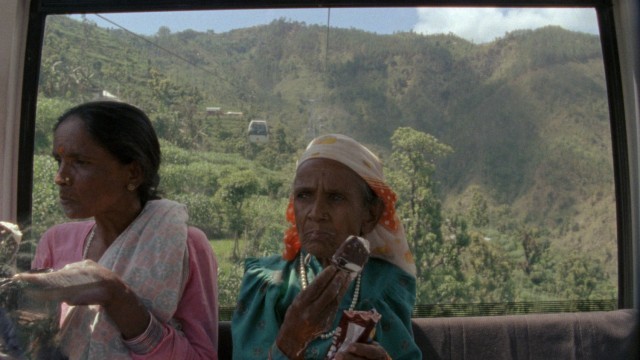
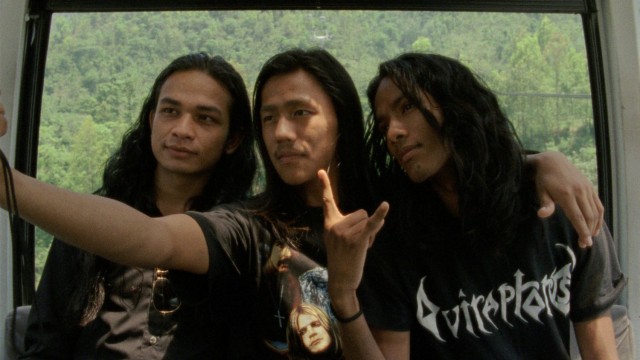
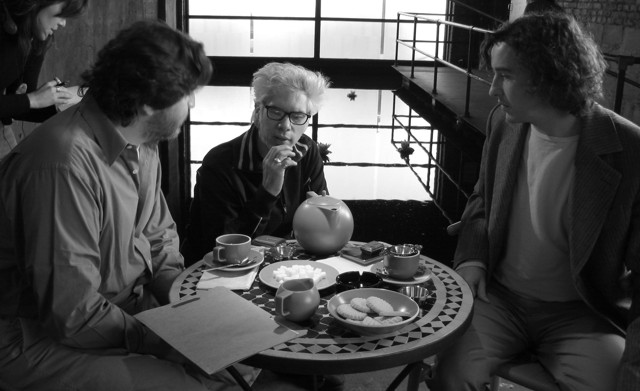
 Jim Jarmusch’s entertaining, offbeat, and often frustrating Coffee & Cigarettes consists of eleven vignettes, filmed over the course of more than fifteen years, that pair actors at bars, diners, and the like, drinking coffee, smoking cigarettes, and talking about drinking coffee and smoking cigarettes. Although the actors use their real names, they are put in fictional situations. While Steven Wright and Roberto Benigni are a hoot, Alex Descas and Isaach de Bankolé are annoying. Alfred Molina and Steve Coogan make the best team, while Iggy Pop and Tom Waits should have been better. So should GZA, RZA, and Bill Murray. Jack White and Meg White, despite a liking for Tesla, show they can’t act. Cate Blanchett with Cate Blanchett is okay but not as good as the riotous team of Joe Rigano and Vinny Vella. The film is a must-see for Jarmusch fans and those who need a nicotine/java jolt. All others beware. Coffee & Cigarettes is screening February 10 with The Garage Tapes, three shorts starring Waits, as part of the Film Society of Lincoln Center series “Permanent Vacation: The Films of Jim Jarmusch,” a tribute to the eclectic writer-director upon the occasion of the release of his latest work, Only Lovers Left Alive. The festival continues through April 10 with all of his feature films, which include such gems as Dead Man, Down by Law, Ghost Dog: The Way of the Samurai, Stranger than Paradise, Mystery Train, and Night on Earth.
Jim Jarmusch’s entertaining, offbeat, and often frustrating Coffee & Cigarettes consists of eleven vignettes, filmed over the course of more than fifteen years, that pair actors at bars, diners, and the like, drinking coffee, smoking cigarettes, and talking about drinking coffee and smoking cigarettes. Although the actors use their real names, they are put in fictional situations. While Steven Wright and Roberto Benigni are a hoot, Alex Descas and Isaach de Bankolé are annoying. Alfred Molina and Steve Coogan make the best team, while Iggy Pop and Tom Waits should have been better. So should GZA, RZA, and Bill Murray. Jack White and Meg White, despite a liking for Tesla, show they can’t act. Cate Blanchett with Cate Blanchett is okay but not as good as the riotous team of Joe Rigano and Vinny Vella. The film is a must-see for Jarmusch fans and those who need a nicotine/java jolt. All others beware. Coffee & Cigarettes is screening February 10 with The Garage Tapes, three shorts starring Waits, as part of the Film Society of Lincoln Center series “Permanent Vacation: The Films of Jim Jarmusch,” a tribute to the eclectic writer-director upon the occasion of the release of his latest work, Only Lovers Left Alive. The festival continues through April 10 with all of his feature films, which include such gems as Dead Man, Down by Law, Ghost Dog: The Way of the Samurai, Stranger than Paradise, Mystery Train, and Night on Earth.